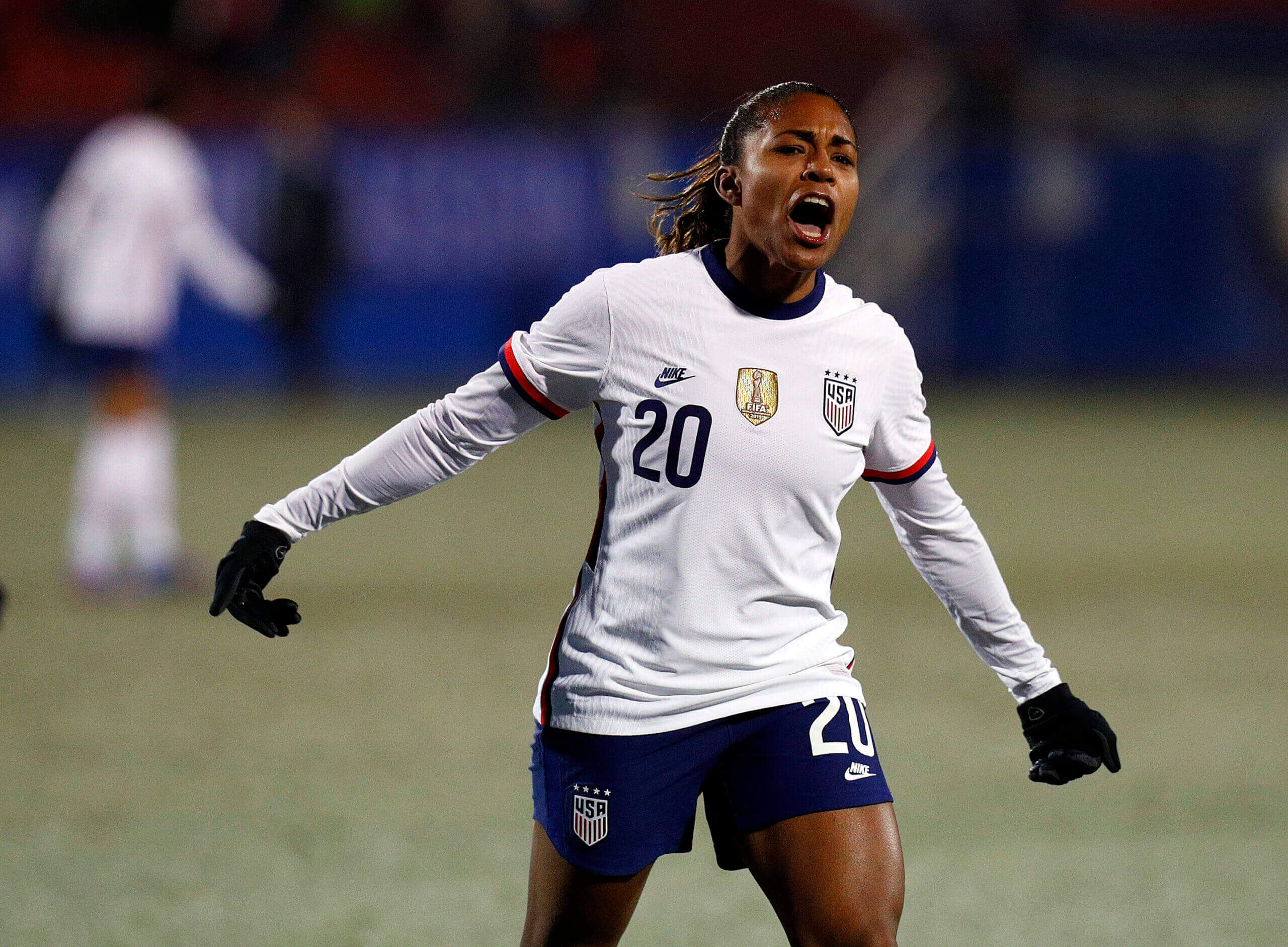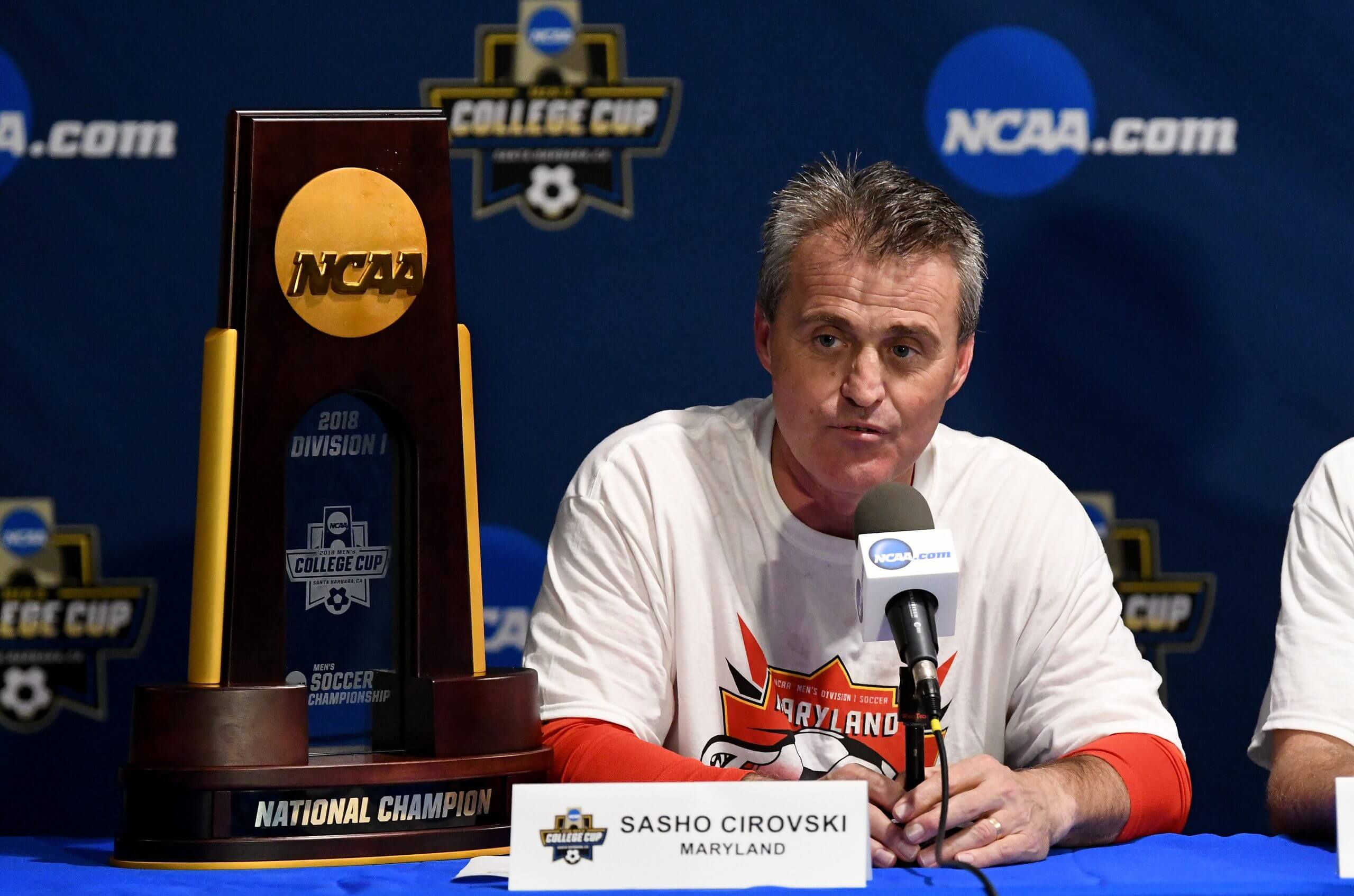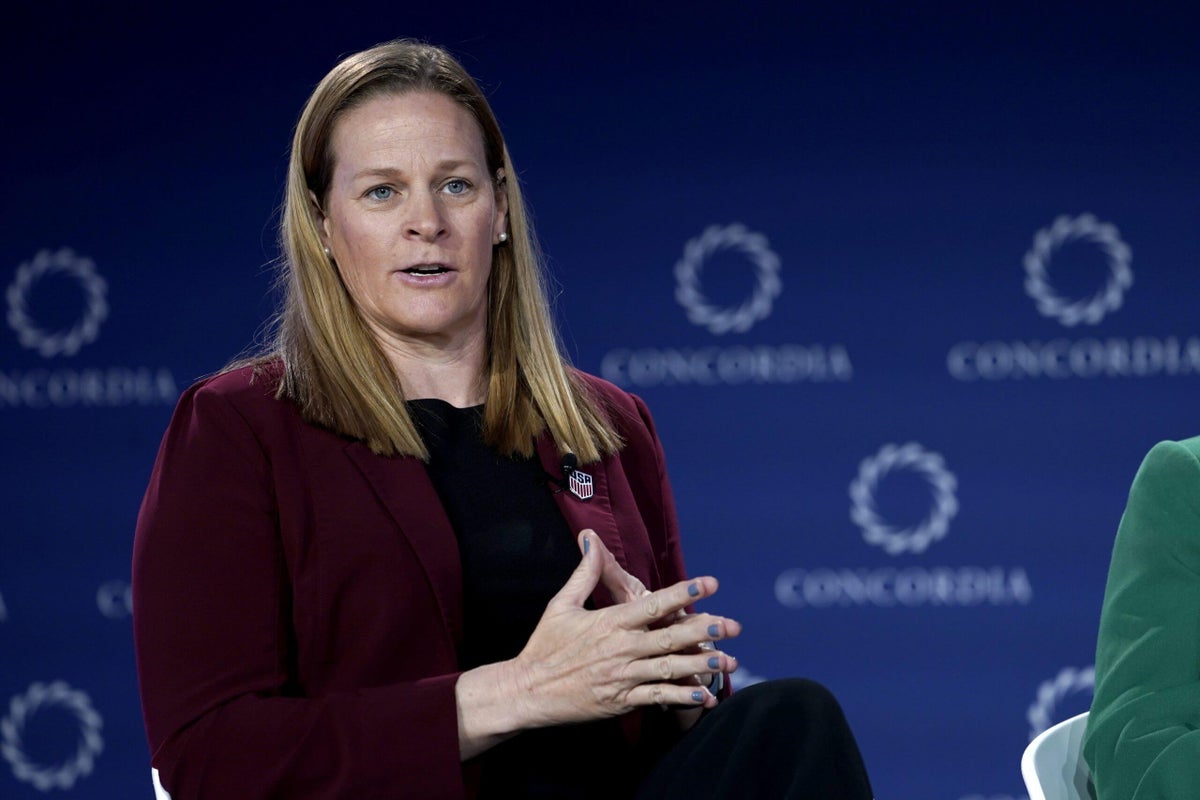A U.S. Soccer-led committee is pushing college soccer toward a new competitive model that could override current conferences, introduce an element of promotion and relegation and extend the college season from late summer through the spring.
In a white paper released Thursday, the committee of college administrators, pro soccer executives, corporate partners and others recommended this revolutionary model for men’s college soccer.
On the women’s side, though, they have met resistance, primarily from coaches, some of whom feel that the recommendations are primarily driven by men’s soccer — and tailored to the top 1 percent of players, rather than to the thousands of kids who play the sport collegiately — multiple people involved in discussions told The Athletic.
The committee, therefore, called for “a broader period of engagement” with women’s coaches, players and administrators to analyze multiple models and ultimately pick one that, “at a minimum, delivers a more competitive environment for elite players to develop in the ‘off-season’ months.” One of the proposals involves an invite-only spring competition featuring top college programs, reserve teams of pro clubs and perhaps youth national teams.
For decades, college soccer has been a fall-only sport. Seasons have begun in August and ended in December — and for a while, that was enough. Programs attached to universities, offering scholarships, were the best pre-professional environment for ambitious American soccer players. They helped produce the vast majority of U.S. women’s national teamers and a majority of every U.S. men’s World Cup squad from 1990-2010.

U.S. international Catarina Macario came through the college system. (Richard Rodriguez / Getty Images)
Their relevance began to fade on the men’s side, however, as youth academies multiplied last decade and pushed American kids to the pros as teens. On the women’s side, the extent of decline is debatable, but many experts now believe that the college environment, given the shortness of the season, is less conducive to player development than the pro club pipelines that are becoming more sophisticated and plentiful in Europe. A growing — though still small — number of girls now bypass college to jump straight into the NWSL.
College sports in general, meanwhile, are navigating a period of uncertainty and dizzying change. Conferences have expanded, or “realigned,” to consolidate money and power, forcing teams to travel across time zones regularly. The House v. NCAA settlement, which allows schools to pay their athletes, will also financially strain athletic departments, and men’s soccer is among the sports in the most danger of being sacrificed.
“It is at risk,” U.S. Soccer president Cindy Parlow Cone said of college soccer generally in an interview with The Athletic. “It may not be immediately at risk, but there is risk around the corner.”
And so, this “NextGen College Soccer Committee,” chaired by Deloitte’s Dan Helfrich in partnership with U.S. Soccer, concluded: “We have reached an inflection point where proactive change is required.”
The changes they propose range from extended seasons to “modernized” eligibility rules that could, for example, allow players who turn pro as teens to take a “second chance” pathway back to the college game. The paper also signals U.S. Soccer’s intent to invest in this segment of the sport that, previously, it had mostly ignored.
“We’re willing to put time, money, expertise in support of this,” Cone said, “not just in the short term but for the long term.”

Vermont dramatically claimed the 2024 NCAA Division I title. (Isaiah Vazquez / Getty Images)
U.S. Soccer CEO JT Batson told The Athletic that the goal is to “make college soccer a key part of soccer’s future. It’s obviously been a huge part of American soccer’s past. This is an opportunity around designing it for the future.”
The big unknown is how leaders in college athletics will respond to the recommendations. Cone, Batson and Helfrich told The Athletic that all relevant stakeholders — including conference commissioners and the NCAA, the association that governs college athletics — were consulted as the committee formulated its stance; so, at least, they won’t be surprised by the paper or its contents. Others, though, predict that powerful conferences will balk at some of the suggestions, and that the path to consensus will be painstaking and messy.
Any overhaul of college soccer’s competitive structure would need to be crafted and advanced by newly empowered, sport-specific NCAA oversight committees. On the men’s side, Helfrich believes “they’ll be able to create legislative proposals, which the recommendations will help inform, in this calendar year” — but the changes could be phased in, rather than forced through as one “big bang.”
The women’s side, meanwhile, “is a little bit more complicated,” Cone acknowledged. A significant number of experienced coaches, perhaps the vast majority outside of a dozen elite programs, are opposed to anything resembling the proposed men’s model. The committee, essentially acknowledging this opposition, agreed to table discussions until after the 2025 season. “I do understand why we needed to pause on the women’s side and do a little more work there,” Cone said.
And “even on the men’s side,” she added, “there’s still a lot of work to do across all levels of the game, to really work through the details of how this is going to come to life.”
Paper calls for urgent change in men’s soccer
The 18-page white paper, finalized this week after months of consultations, repeatedly calls for urgency. The committee “evaluated” multiple competitive models, and for men’s soccer, its conclusion was clear: the sport should “move expeditiously” to perhaps the most transformative of the analyzed models beginning next season.
In the committee’s preferred scenario:
The regular season would begin in September, break for December and January, then resume in February, and feature roughly one game per weekend. It would conclude, and a national tournament would begin, in April. The national championship would be won in late April or May.
All 213 men’s Division I programs would be split into four regional conferences (of 50-54 teams each). Those, in most cases, would replace current conferences (i.e. the Big Ten and ACC).
Within each region, the 50-plus teams would be split into two tiers. The top tier, featuring the “most competitive” teams, would comprise two divisions (of nine teams each); the second tier, featuring the rest, would be four “local” divisions based on geography.
Every team would play every divisional opponent twice, once home and once away, just like in a European pro league. They’d also play a few “crossover games” against non-divisional opponents.
After 18-22 regular-season games, 88 teams — 22 per region, determined solely by table placement, but with more bids allocated to top-tier divisions — would qualify for one expanded postseason tournament. A play-in round would whittle the field to 64.
The teams would be sorted into tiers by objective criteria in Year 1. Then, in future years, they could move up or down, “either through on-field performance similar to promotion/relegation or off-field analysis by a committee that objectively considers many factors,” the committee wrote.
The system, interestingly, would not actually add many games to the calendar. But it would spread those games over six months rather than four, relieving what the committee calls “the physical, mental, and academic toll of a highly congested single-semester fall soccer calendar.” It would allow for better training. And in conjunction with “modernized” rules, it would give players a full summer to train and/or play with pro teams — or to pursue normal internships.
The other potential benefit is the April-May championship window, post-basketball, pre-softball/baseball/lacrosse and far away from football. This, in theory, could create “elevated commercial interest,” the committee wrote. And “the national tournament format would be designed with commercial partners to optimize revenue and visibility.”
Those benefits have been at the heart of proposals to reform men’s college soccer for over a decade. Sasho Cirovski, the longtime University of Maryland coach and advocate for reform, told The Athletic that “the most important piece” of any new model “is the decompressed, split season and especially the spring championship.”

Maryland head coach Sasho Cirovski supports reform. (G Fiume / Maryland Terrapins / Getty Images)
He worries, then, about regionalization and tiering — not because the concepts are inherently bad, simply because they’re logistically and politically complex.
“There are a lot of complications when you’re breaking up conferences,” Cirovski said. “And how do you select the top tier? How do you create scheduling? I’m afraid that is going to slow the process and muddy the waters of an idea that’s been worked on for years.”
He commended the committee’s work, but advocated for a phased approach, where a simple extension of the season could be introduced after the 2026 World Cup; regionalization, which he supports in some form, could then be explored for future seasons.
The committee argues that regionalization, along with a preseason more aligned with academic calendars, could save programs anywhere between $25,000 and $350,000 — in part because a school like Maryland would be playing Virginia and Pittsburgh rather than UCLA and Washington. (The committee also suggests that current conferences could “run pre-season or in-season mini-tournaments or Cups that award a distinct conference championship trophy.”)
And among athletic directors, many of whom must cut costs in so-called “Olympic sports” while prioritizing football and/or basketball, there seems to be support.
“In my position, everything is so much about resources and revenue generation,” Chris Clunie, the athletic director at Davidson College and a member of the U.S. Soccer committee, told The Athletic. “And if there’s a way for us to maximize efficiency, to do things differently in a manner that allows us to cut back on spending, to shift to more of a localized, regionalized model that impacts budgets, and allows us to do more with more, I’m all for it.
“I’m not trying to cut soccer. I don’t want to cut resources to soccer. But if there were ways for us to be more efficient with the dollars that we’re spending, ultimately that’s gonna help us.”
In fact, if U.S. Soccer can help generate revenue for college programs and subsidize expenses, Clunie sees a future where NCAA leaders could work with national governing bodies in other sports to do the same.
“If this goes well, this can be applied across a number of other Olympic sports,” he said. “This could potentially build a model. Especially in this world of college athletics, where big-time college football is driving the machine. You [might have to] get off the bus and start driving your own bus.”
Recommendations for women’s college soccer
Much of the same rationale also applies to women’s college soccer, and multiple people close to the committee have told The Athletic that some stakeholders believe a similar overhaul should occur on the women’s side.
Women’s college soccer, though, is protected by Title IX and not facing the semi-existential threat looming over men’s soccer. It also exists in a different context, with a variety of distinct realities, many of which the committee acknowledges: there are more programs (353) and less competitive parity; and college soccer remains the world’s most common pathway to women’s professional soccer.

Mallory Swanson was a rare case, skipping college to jump straight to the NWSL. (Michael Madrid / USA TODAY Sports)
“But the women’s soccer ecosystem — both globally and domestically — sits in a moment of unprecedented innovation, investment, and opportunity for elite players,” the committee writes. Those elite players are central to one of the committee’s three “must-have” outcomes: Any proposal, it writes, “must enhance the identification and development of elite players for professional and/or National Team careers immediately.”
So, it “believes strongly that this creates an imperative for U.S. women’s college soccer to proactively modernize.”
What the committee hasn’t yet built consensus on is how to “balance the interests and soccer-related ambition of the approximately 9,000 Division I women’s players with the hundreds who have professional and/or national team futures.”
That, multiple people told The Athletic, has been part of the struggle. Just last winter, women’s soccer coaches pushed through new NCAA legislation that will elongate their season by two weeks to ease congestion. A majority believe this slightly extended season suits their sport just fine.
So, the committee settled on a three-part recommendation:
The 2026 fall season should continue as planned.
In the spring of 2027, U.S. Soccer should work with “certain elite programs” to build a new competition. Four college-only regional tournaments would feed into “a new flagship elite global U23 soccer event” featuring the college winners and, perhaps, reserve teams of pro clubs or youth national teams.
After the current season, talks should continue, and “during this period,” the committee writes, “we should analyze both the implications and stakeholder preferences of pursuing more fundamental structural changes to the women’s competitive model and calendar.” Among the models to consider would be one “similar to the proposed men’s model”; and one that expands on the “elite” spring competition.
Radical eligibility shifts mooted
In addition to new competitive structures, the committee also spelled out 10 recommendations for integrating college soccer into the sport’s broader U.S. ecosystem. U.S. Soccer, for example, should promote college national championship events and turn them “into a larger celebration of soccer.” It should engage more with players and coaches, and perhaps arrange “showcases” for top prospects “in connection with pro leagues.”
The most radical of the recommendations here related to eligibility rules. “Areas for exploration,” the committee wrote, “include:”
“Allowing players who have signed or are under rights agreements with professional teams to pursue college competition” — with the pro teams potentially funding “some or all of their scholarships.
The “second chance” pathway for “players to enroll and compete in college after previously starting a professional career that has stalled.”
Expanding opportunities for college players to train with professional teams outside the academic calendar.
The depth of the recommendations, and the length of the process, also begged a question: Why? Why would U.S. Soccer sink so much time and money into college soccer as it seemingly declines in relevance?
The answer, Batson and Cone told The Athletic, is that college soccer helps facilitate participation at all levels of the game. It produces pro players, but it also incentivizes parents to put their kids in the sport. It helps create fans, executives, referees and coaches.
“It’s one of our unique advantages as a country,” Batson said. “So, we want to be great at it.”

